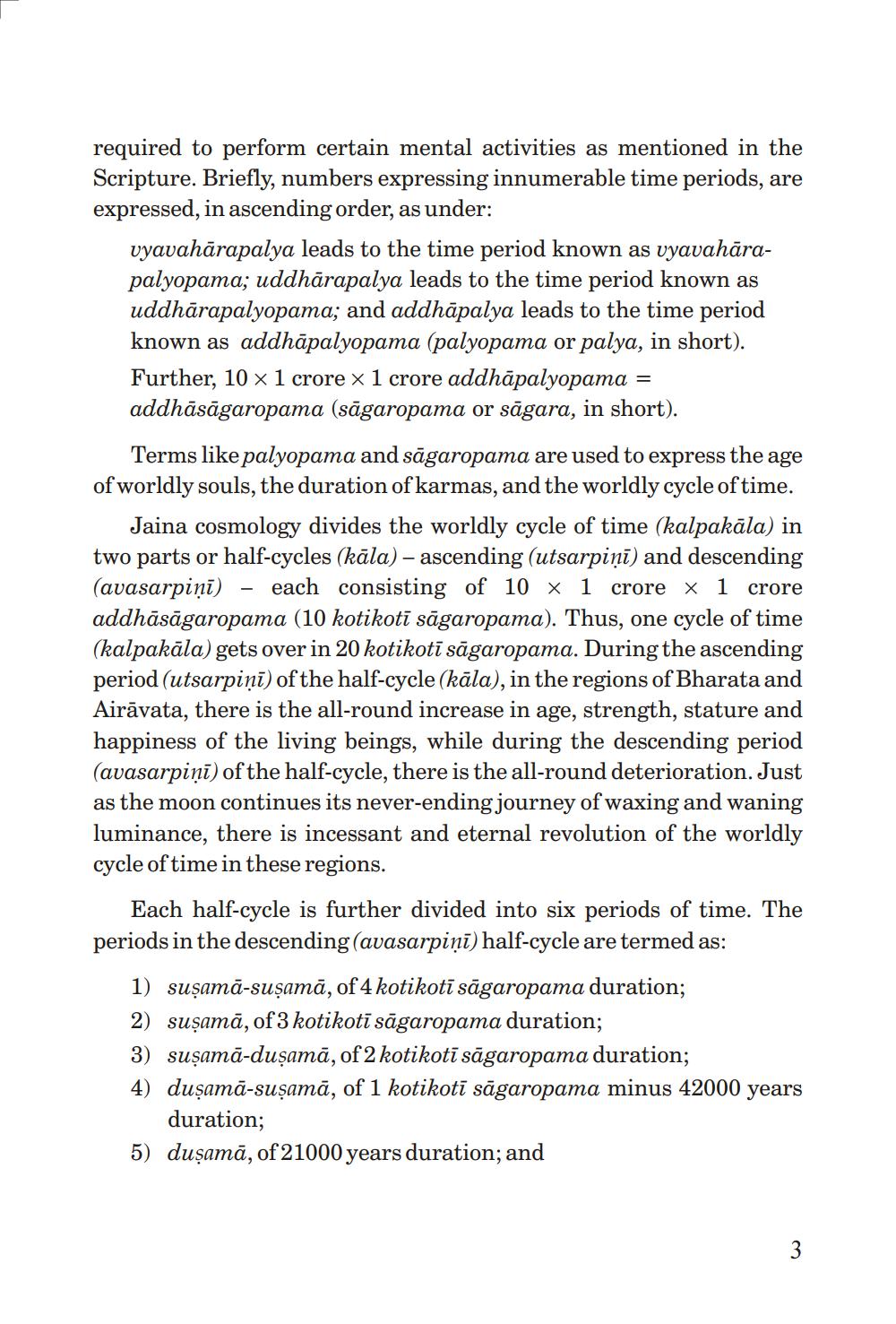Book Title: Divisions Of Empirical Time In Jainism Author(s): Publisher: Unknown View full book textPage 3
________________ required to perform certain mental activities as mentioned in the Scripture. Briefly, numbers expressing innumerable time periods, are expressed, in ascending order, as under: vyavahārapalya leads to the time period known as vyavahārapalyopama; uddhārapalya leads to the time period known as uddhārapalyopama; and addhāpalya leads to the time period known as addhāpalyopama (palyopama or palya, in short). Further, 10 x 1 crore x 1 crore addhāpalyopama = addhāsāgaropama (sāgaropama or sāgara, in short). Terms like palyopama and sāgaropama are used to express the age of worldly souls, the duration of karmas, and the worldly cycle of time. Jaina cosmology divides the worldly cycle of time (kalpakāla) in two parts or half-cycles (kāla) - ascending (utsarpiņi) and descending (avasarpiņi) - each consisting of 10 x 1 crore x 1 crore addhāsāgaropama (10 kotikotī sāgaropama). Thus, one cycle of time (kalpakāla) gets over in 20 kotikotī sāgaropama. During the ascending period (utsarpiņi) of the half-cycle (kāla), in the regions of Bharata and Airāvata, there is the all-round increase in age, strength, stature and happiness of the living beings, while during the descending period (avasarpiņī) of the half-cycle, there is the all-round deterioration. Just as the moon continues its never-ending journey of waxing and waning luminance, there is incessant and eternal revolution of the worldly cycle of time in these regions. Each half-cycle is further divided into six periods of time. The periods in the descending (avasarpiņi) half-cycle are termed as: 1) suşamā-suşamā, of 4 kotikotī sāgaropama duration; 2) suşamā, of 3 kotikotī sāgaropama duration; 3) suşamā-duşamā, of 2 kotikotī sāgaropama duration; 4) duşamā-suşamā, of 1 kotikotī sāgaropama minus 42000 years duration; 5) duşamā, of 21000 years duration; andPage Navigation
1 2 3 4 5
